Secrets to designing a warm and cozy living room
The designer Max Sinsteden on lighting, furniture, and thinking outside the box.
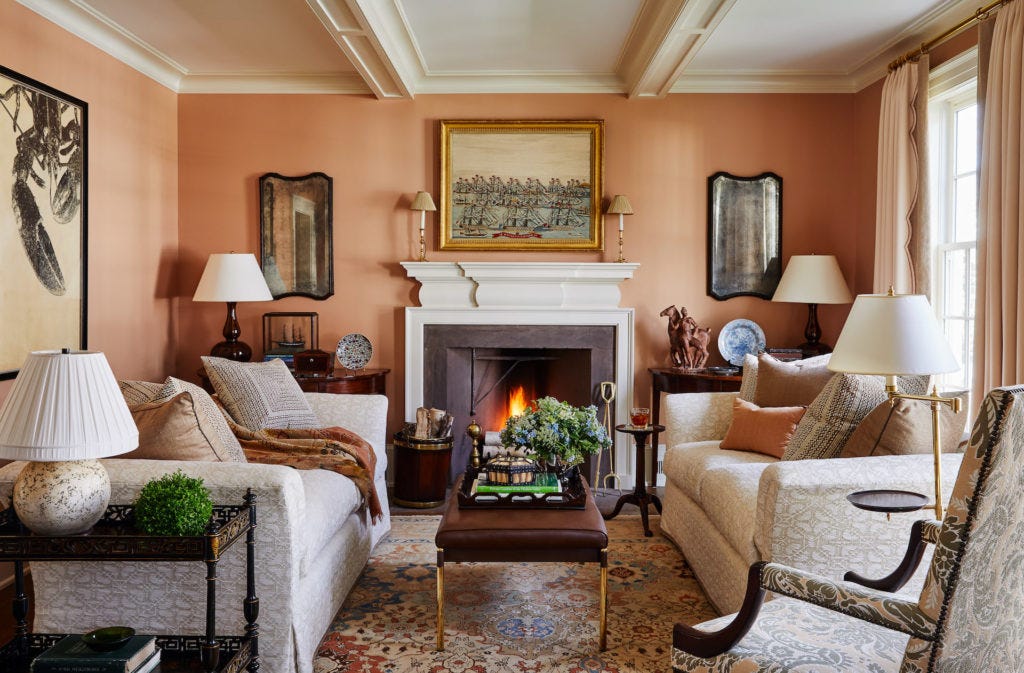
Welcome to Second Story, a newsletter for people who love old houses and beautiful rooms. Not on the list? Subscribe below! The first month’s completely free—give it a try! xx Robert
A little over a month ago, while nobody was home (of course), a rogue toilet decided to spontaneously flood our historic house in the Finger Lakes. The next day, we found ourselves in the midst of a very wet problem, with the walls, ceilings, and floors of our 204-year-old double parlor—among other areas of the house—in need of some serious rehabilitation.
As we wade through the demolition, reconstruction, and insurance of it all, I’m resolute to make the most of this unfortunate situation. While there’s much more to come on that front, in the meantime, I’m starting to focus on the furnishings so these twin living rooms become as cozy and comfortable as possible (once they, of course, get walls and a ceiling again). For guidance, I knew exactly who to call: my friend, the interior designer Max Sinsteden.
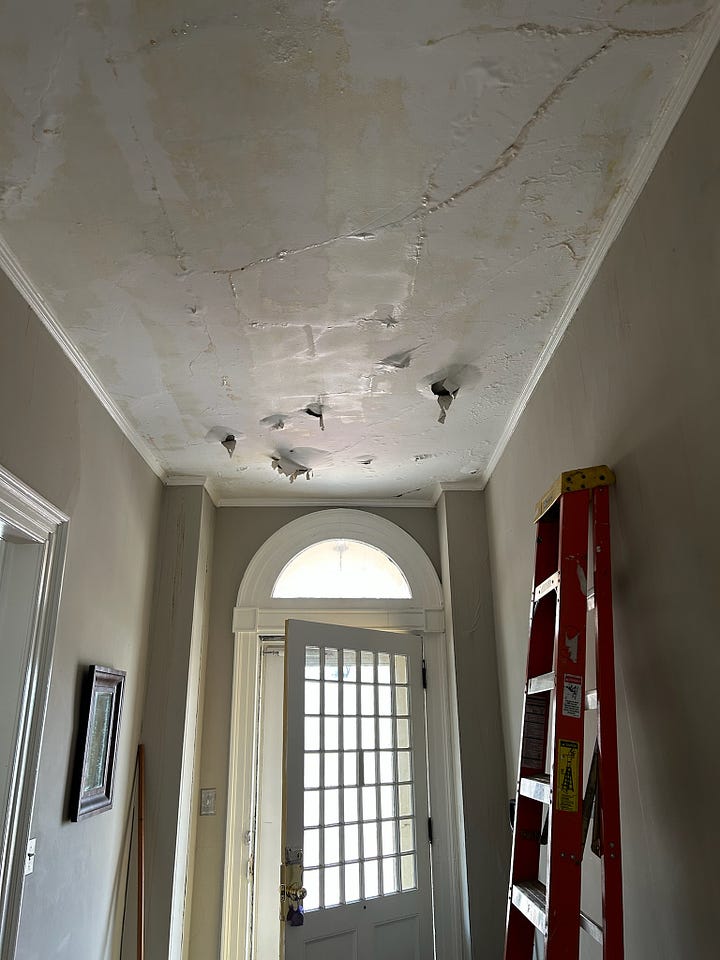
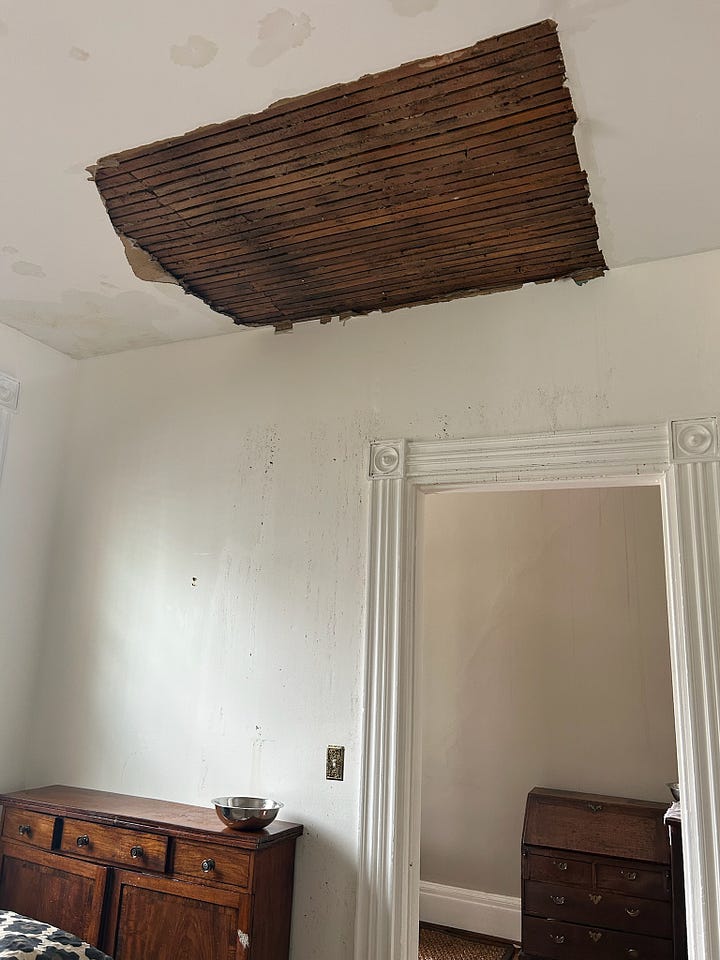
Max has been on my radar since 2009 when New York Magazine featured his college dorm room that he transformed into a mini English drawing room, with vibrant green walls, gallery wall, and layered rugs.
Now, 16 years later, Max has become a widely published designer known for fresh and elegant reinterpretations of traditional interior design. Naturally, I had to get his thoughts on how to create a layered and inviting room.
Beware of the Big Light!
“The more layers of light you have at different heights give a room balance and glow. That makes everyone instantly feel so much more comfortable,” Max said to me one morning in his beautifully designed office on Madison Avenue. “I abhor downlighting!”
By downlighting, Max means can lights, which are best for practical spaces like a kitchen or a bathroom.
“There’s no such thing as too many light sources in a room. There’s such a thing as too much light! But not sources.”
Looking around his office, it was not hard to see what he meant, with the variety of lamps, whether hanging from the ceiling, resting on a table, or attached to the wall, emitting a soft glow. It was not even noon and I was more in the mood to cozy up with a book. “Varied lighting gives a room a sense of warmth and approachability.” Max added.
Consider the “skyline of the room”
Max explained that a successfully designed room has elements that draw the eye up and down, something that the renowned designer Albert Hadley would call the “skyline of a room.” Visually connecting the various pieces, even if they’re all different styles, helps to make the room cohesive.
If you find yourself worried that the furniture is a bit too eclectic, there’s a simple trick: “I create a story that connects all the pieces and why they might work—even if it’s farfetched! If the jumble isn’t thoughtful, the whole lot could look mismatched, which isn’t the intention.”
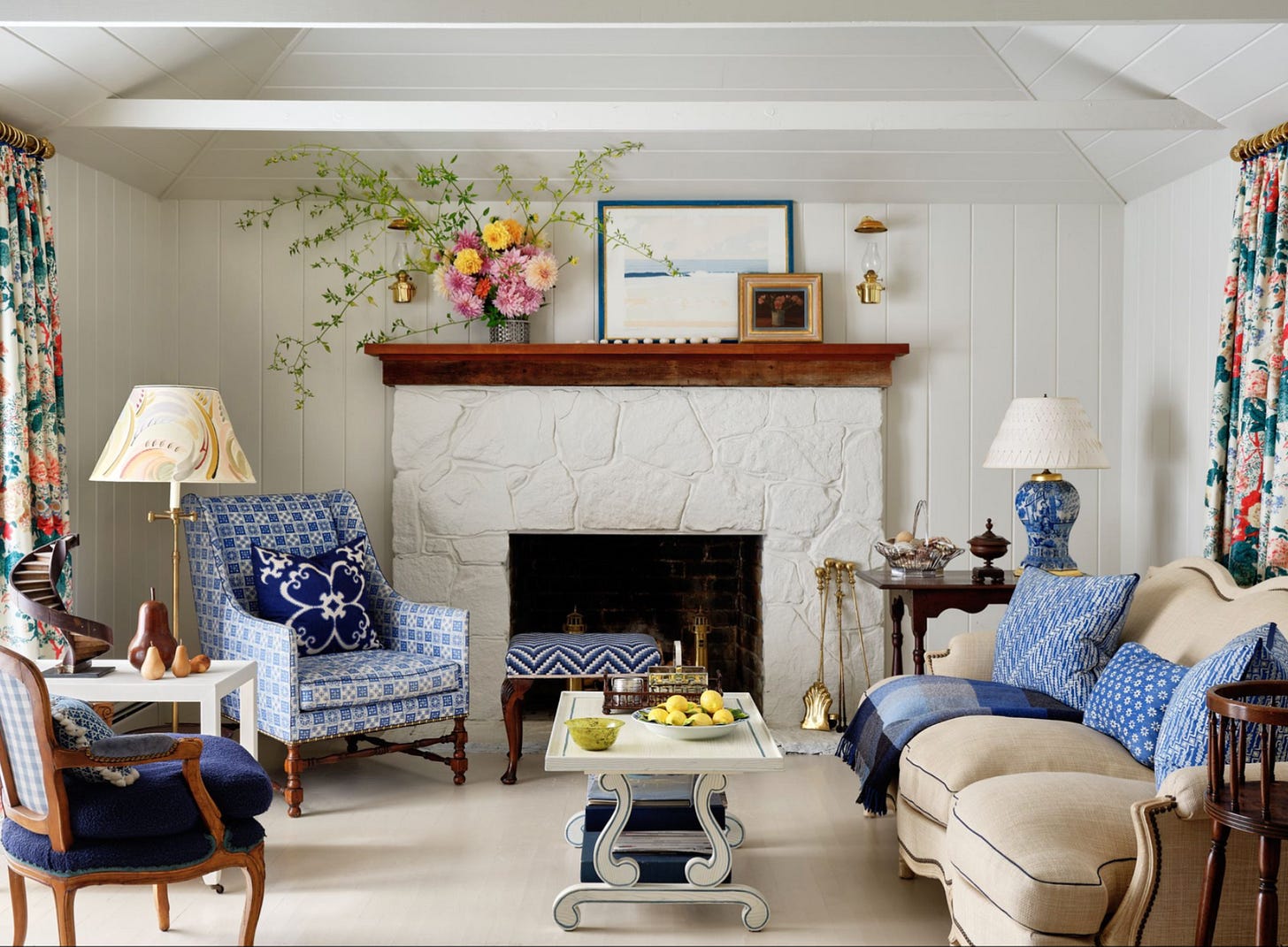
Another secret to success? Knowing when to pull back. “If you want to keep things fresh and looking current, it’s about trying to pare it down a little, like the age-old expression of taking one accessory off before leaving the house. You can keep the layers and the details, but maybe remove one thing.”
Fill the room with furniture!
“If you’re after coziness like what’s found in an English country house, you must remember that most of the time, you actually want to fit more furniture into the room than less,” said Max.
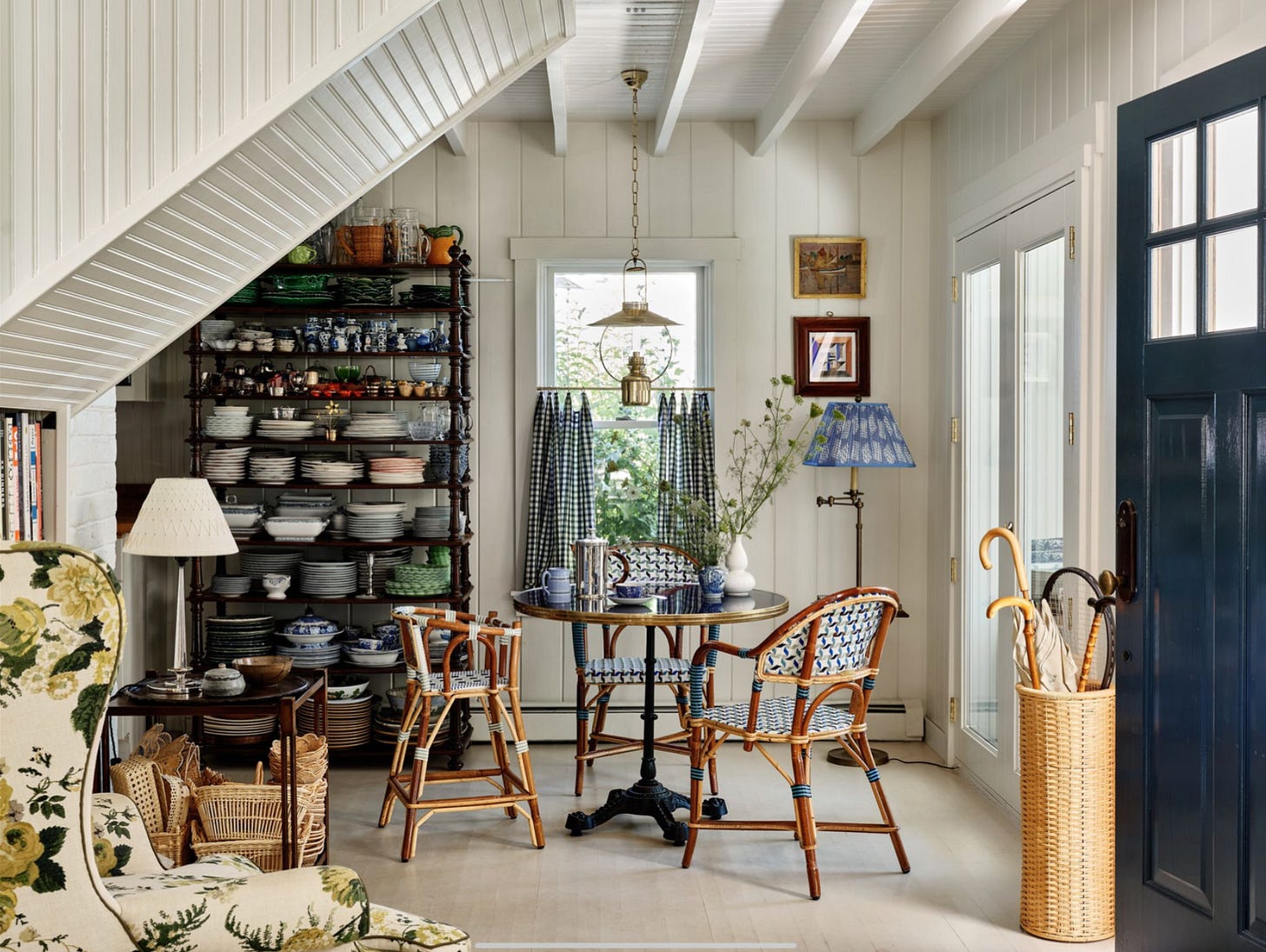
He explained that although English country houses conjure mind’s eye images of big overstuffed sofas—George Smith, please—he wouldn’t recommend actually going that route unless you have the space for it. Two large sofas facing each other fit fewer people than you might think. “You want to accommodate the maximum minimum, and nobody wants to sit in that middle couch seat!” he said. “Think of how many people can fit around your dining table—they should all be able to sit down in one group in your living room.”
That could mean something as simple as a stool that someone can perch on with their cocktail. The goal is to set up a layout that promotes conversation and doesn’t leave anyone out.
…And vary it up while you’re at it.
“Whenever I’m decorating a house, I try to have many different styles of chairs for all the types of people that you might have over,” Max said. “If you create different opportunities for people to pick places that feels comfortable to them, the whole feels more comfortable.”
He added that the types of furniture lend different functionalities to the space, which in turn creates the varied aesthetic that is often found in English country houses.
Little details can make all the difference. “This doesn’t mean spending a ton of money!” Max said. “I love piping the edges of cushions with ribbon that’s $12 a spool.”
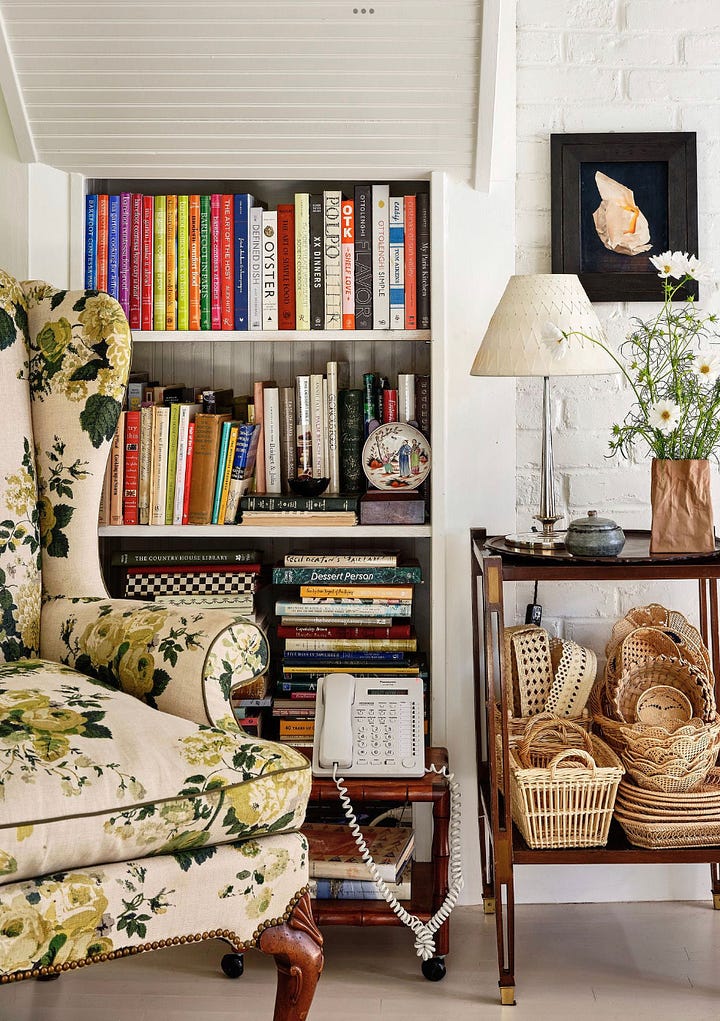
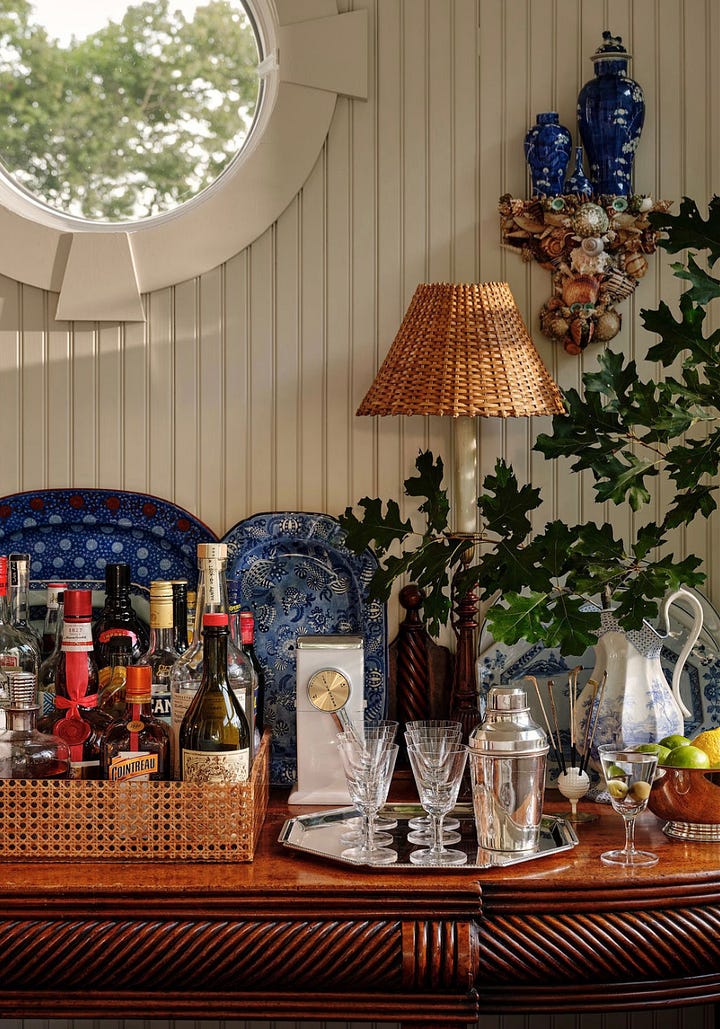
“When you walk into an eclectically decorated room, it’s so interesting to see which people are drawn to the different elements of the room,” Max said. “Maybe they’re in a formal outfit and want to sit straight up, and someone else is wearing something more casual and wants to sink into a chair. Everyone finds a place to be themselves.”
A note on paint!
There are endless ways to use paint in a room, but if you’re just starting out, Max says his rule of thumb is to make the trim one shade lighter than the walls. The ceilings should be the lightest shade, typically. A crisp trim helps to define the room.
“But rules are meant to be broken—sometimes to create a cozy room, you want to paint the ceiling the darkest shade to make it seem lower and warmer!”
If things aren’t working, redefine your expectations
Max said that one of the most common mistakes he sees people make when furnishing a room is when they get too caught up trying to prioritize one aspect of the room.
“Let’s say that the room has a beautiful view and that’s what you want to emphasize. Sometimes, people lose sight of what’s best for the furniture layout because they’re too busy assuming that everything has to face the window.”
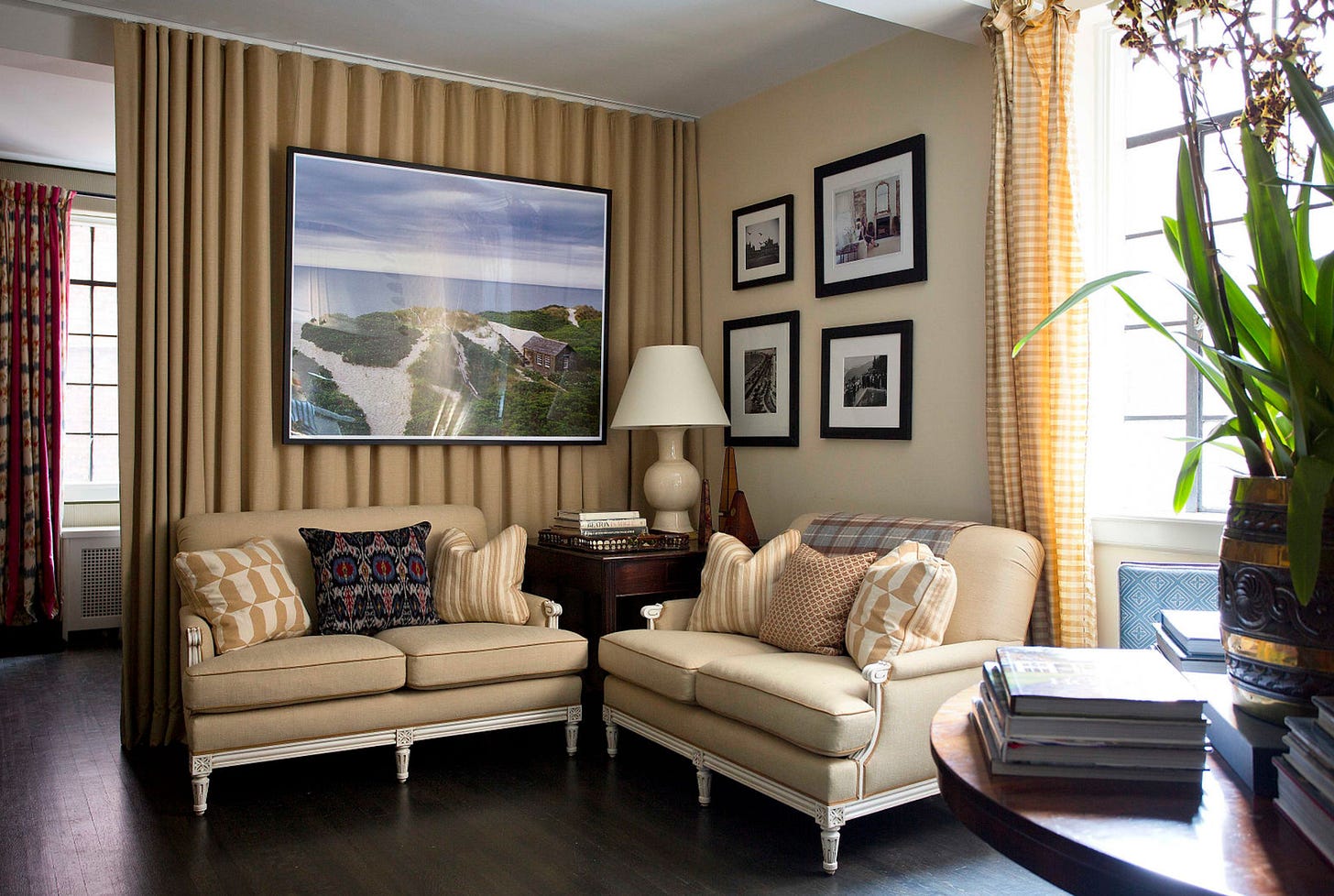
Instead, forget about all that for a second and look at what’s best for the room. “Maybe you’re trying to do too much! Think outside the box. Maybe the couch needs to be repositioned in the room and moved away from the fireplace looking toward the view.”
Hot tip: If the couch is in the middle of the room, it should be skirted and not on bare legs. “You want to ground the sofa in the room. Otherwise it’ll be floating and you don’t want that.”
The moment you think outside the box is when everything could instantly click into place. “People will naturally enjoy the view if the furniture is arranged well. Don’t worry about it!”
A FEW MORE THINGS
There is truly no better meat/candy thermometer than the Thermapen, and it’s currently on sale for $76 (normally $109). John often travels with ours, because he uses it so much. I wish I was joking. Buy two! We may get a second, lol.
We need to renovate a bathroom upstairs (looking at you, flood) and we’re thinking about going with a classic console sink like this one from Signature Hardware, which Annie Meyers-Shyre also has in her recently completed home.
I was recently reminded of how much I liked The Lost Summers of Newport, a sort of perfect thriller to start the season off (even if it’s 55 degrees and raining).
Big news: I’m officially launching paid subscriptions to this newsletter!








love the tip about the number of seats in your living room should mirror how many can sit at your dining room table... never thought of it that way, but that is pro-level entertaining!
Say hi to Max for me - I taught him high school English. I’m no designer, but I’ve also followed his career loosely and have learned from him.